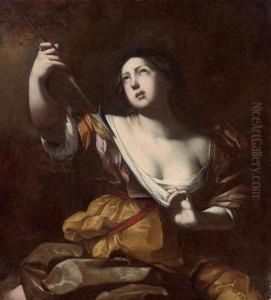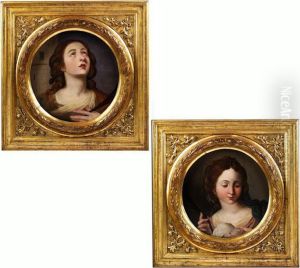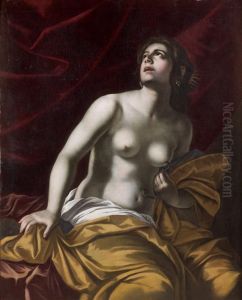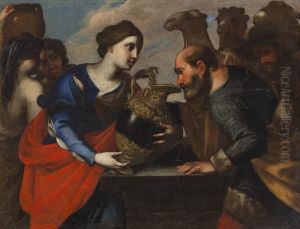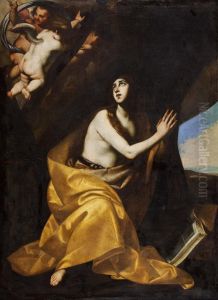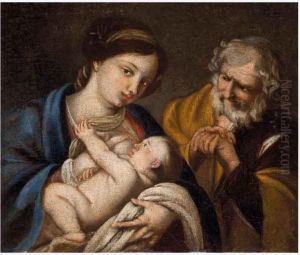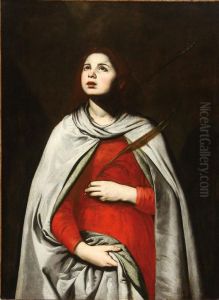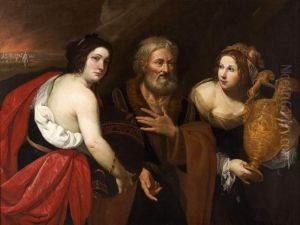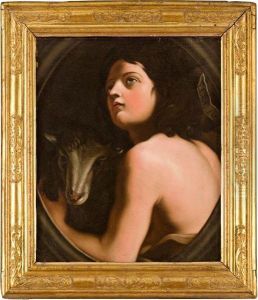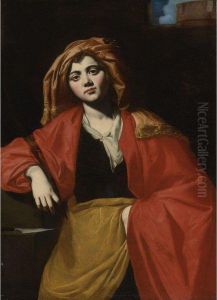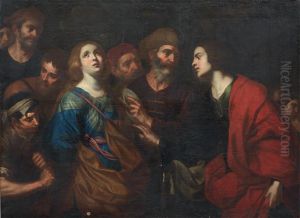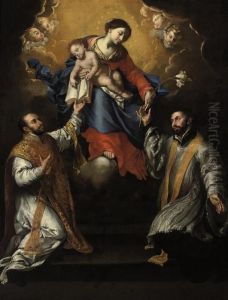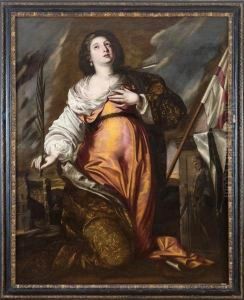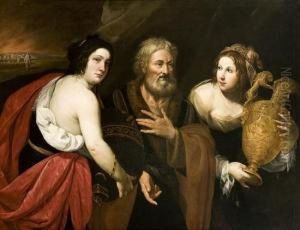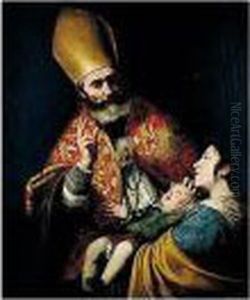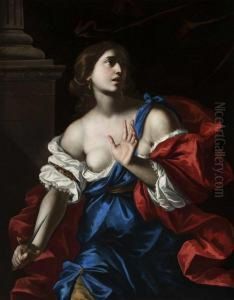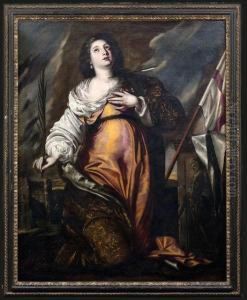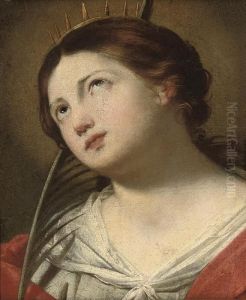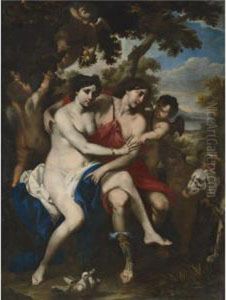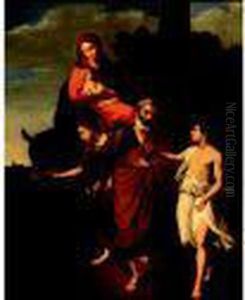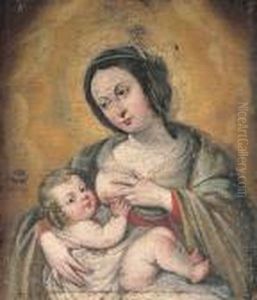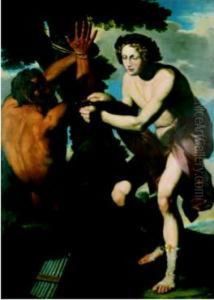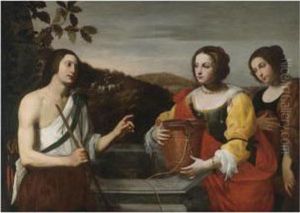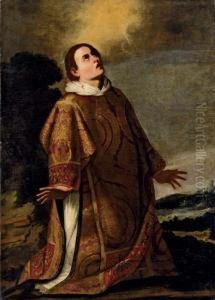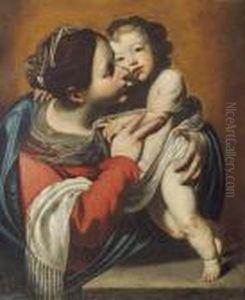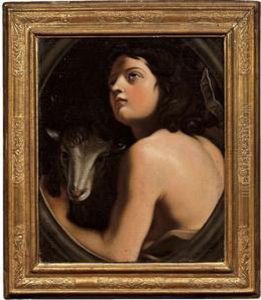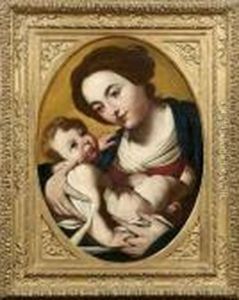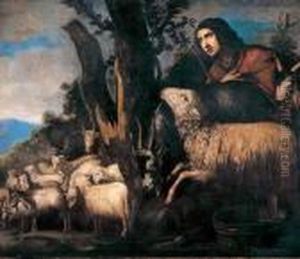Francesco Pacecco De Rosa Paintings
Francesco Pacecco De Rosa was an Italian painter of the Baroque period, active mainly in his native city of Naples, Italy. Born in 1607, De Rosa was part of the vibrant Neapolitan school of painting that flourished during the early to mid-17th century. His work is characterized by its dynamic composition, rich color palette, and dramatic use of light and shadow, which are hallmarks of the Baroque style.
De Rosa's artistic training and early influences are not thoroughly documented, but it is believed that he was a pupil of Massimo Stanzione, an important painter of the Neapolitan Baroque. This apprenticeship would have provided De Rosa with a solid foundation in the prevailing styles and techniques of his time. He may also have been influenced by other prominent artists of the period, such as Jusepe de Ribera and Caravaggio, whose works were well known in Naples.
Throughout his career, De Rosa developed a reputation for his religious works, which were often commissioned by local churches and confraternities. His paintings typically featured biblical and hagiographical scenes, rendered with a strong sense of drama and emotion. De Rosa's ability to capture the human form with a sense of vitality and expressiveness earned him numerous commissions and a respected place among his contemporaries.
Unfortunately, De Rosa's life was cut short when he died in 1656. Despite his relatively brief career, he left behind a legacy of work that continues to be appreciated for its contribution to the Baroque movement in Italian art. His paintings can still be found in various churches and collections in Naples and beyond, serving as a testament to his skill and artistic vision.
